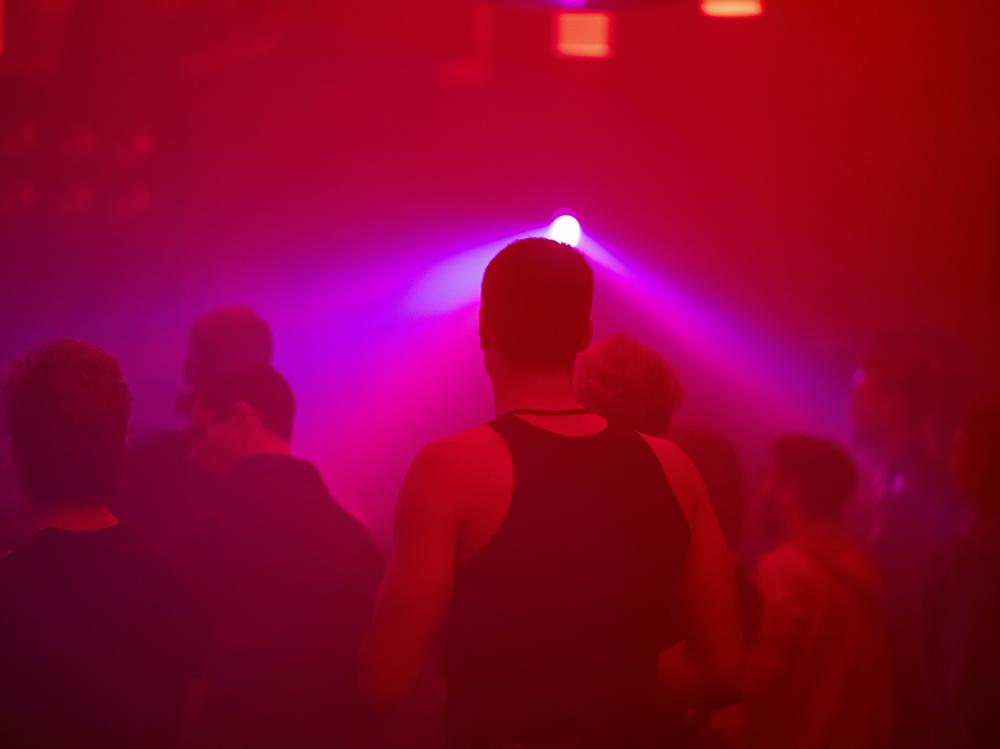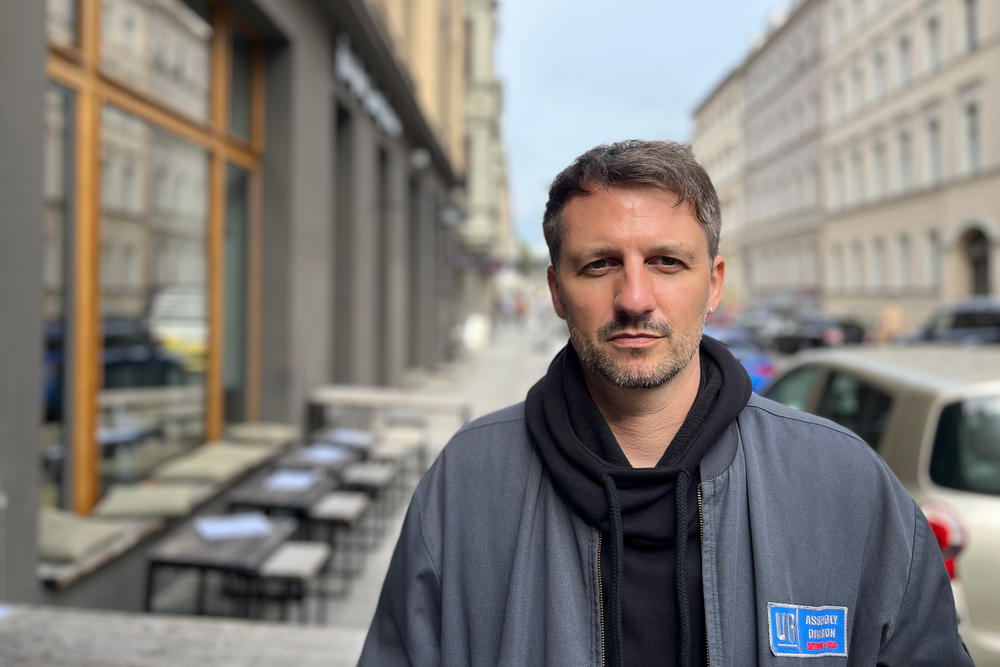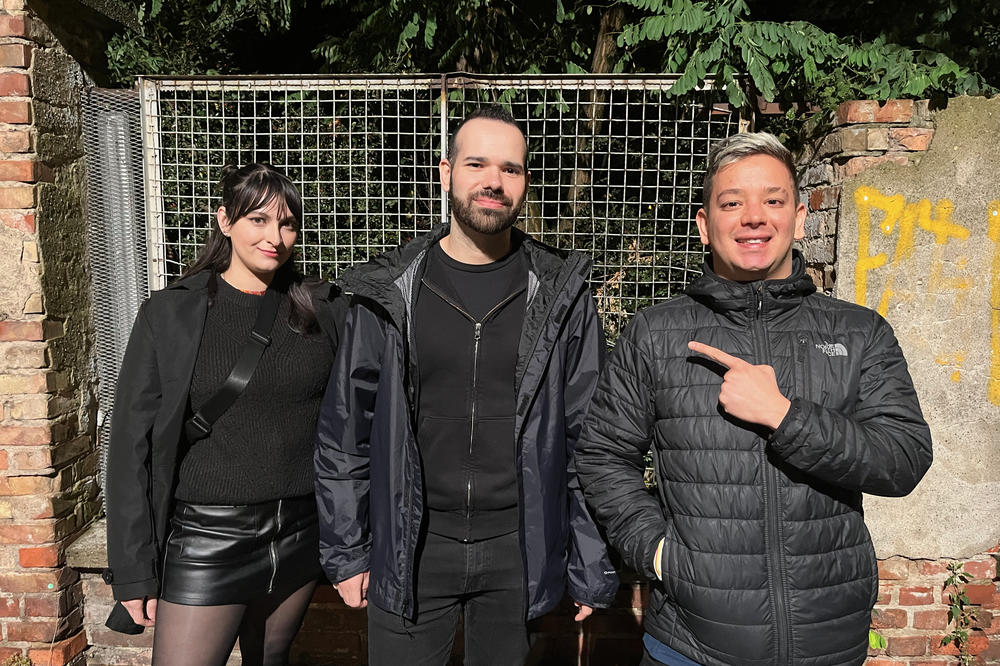Section Branding
Header Content
Berlin's famed nightclubs, losing customers, face an uncertain future
Primary Content
BERLIN — For those who haven't experienced it, a night at a club in Berlin can be reduced to a math equation whose first variable is the best club you've been to.
"Berlin nightlife is, let's say, what you've experienced, multiply that by 10," says Zak Khutoretsky, otherwise known by his DJ pseudonym, DVS1.
"Berlin nightlife is very free," he says. "It's trying to push artistic boundaries. It's trying to push personal boundaries. It's trying to let people experience music, art and culture with some rules. But those rules are created to have no rules."
Khutoretsky, who holds a residency at the Berlin club Berghain, says he's heard complaints lately from club owners and promoters in Berlin about declining numbers of club-goers. Even Berghain, typically an anomaly because it draws crowds from around the world, has raised its cover charge to deal with rising costs. He thinks fewer Europeans are making quick clubbing trips to the city due to the financial hit of the pandemic.
"So where a casual weekend to Berlin before the pandemic was a simple decision and paying the cover and eating food and taking taxis and then getting home before you have to go to work on Monday was a really easy thing to do within Europe," reasons Khutoretsky, "I think it became harder after the pandemic."
Berlin Clubcommission chair Lutz Leichsenring says before the pandemic, a third of tourists came for the city's nightclubs, and they typically spent $1.6 billion per year while they were here.
In 2021-2022, 5.5 million tourists came to Berlin, 30% fewer than pre-pandemic numbers.
But declining tourism isn't the only problem.
"You have inflation, you have an energy crisis and you have also the rise of the minimum wage," says Leichsenring, whose group represents Berlin's clubs, is funded by them and acts as a lobbying body for them in front of the city and federal government. "There's also less demand because fewer people are in the city. People don't spend so much money because of the inflation. It's a very critical time."
A critical time, too, because of how Berlin is developing as a European metropolis.
"I think that in Berlin, much more than in other big cities, there's a deep connection between the nightlife and urban development," says Tobias Rapp, a culture writer for Der Spiegel and author of the book, Lost and Sound: Berlin, Techno and the Easyjet Set.
Rapp says Berlin's club scene is an outgrowth of how the city developed after the fall of the Berlin Wall and Germany's reunification more than three decades ago.
"In the years after reunification, one-third of East Berlin was empty," recalls Rapp. "There was nobody living there. It was a ghost town. So young people like me and others, we took spaces. You have an empty warehouse or an old factory that is empty, and you go in and you squatted, and you say, 'This is ours.' And you have this huge space and you say, 'What can I do with this?' You make a party."
Berlin's clubs evolved from life on the margins to trendsetting culture destinations
In the early 1990s in East Berlin, nightclubs popped up in abandoned breweries, power stations and bomb shelters. None of this was safe, and Rapp considers it a minor miracle there wasn't a horrible fire or other accident inside one of these makeshift clubs.
Eventually, investors and the city began to take note — they worked together to build legal, licensed clubs and other businesses began to arrive, too.
"The side effect was it was good for the value of the properties," says Rapp, "because in lots of areas that were rundown, that were empty, that were not nice, that didn't have a good reputation, you suddenly had galleries, bars, nightclubs that gave these areas certain value."
And with that came young renters who turned into middle-aged homeowners with children. And as housing prices have risen, Berlin's transformed, gentrified neighborhoods have become less comfortable with the city's clubs and their subculture.
Just down the block from Berlin's infamous fetish and sex club, the KitKatClub, Undine, a resident who's critical of the club and would only give her first name for fear of retribution from club-goers and the club owner, points out the detritus of the previous evening.
"You should take a photo of all this trash the clubbers have left behind," she says with a sour face. "Nobody picks it up. Nobody cares. I've complained several times to the police about the noise and rowdiness in the early hours of the morning from this club."
Complaints like this are on the rise in Berlin as the city's housing prices go up and urban spaces become tighter. But for Zak Khutoretsky, the DJ, it's clear who should get a free pass.
"Who was there first?" he asks. "If the club was there first, why can't the club be protected in the same way that if an apartment building was there first and a club moved in? Well, in this case, the clubs were there first. The culture was there first. And I think it's important to protect those things."
The Berlin Clubcommission is, in fact, seeking the type of protection that the city offers its museums, opera houses and other cultural institutions, so that it can survive its current and any future downturns. Such protection includes city subsidies and tax breaks.
Near midnight on a Thursday at Berlin's Berghain club, there is no line. Maybe it's too early; maybe times are tough. Despite this, when Andrea Sibaja and her friends approach the bouncer, he shakes his head, directing them to the way out.
They're Costa Ricans who live in Boston, and they flew to Berlin because Berghain was on their bucket list.
"I'm one of those people that usually wears black and I feel like, oh, maybe I'm part of that. I want to hang out with people that have the same vibe as me and.... Rejected!" Sibaja says, shaking her head.
Sibaja is still in a state of shock and lingers outside in the cold, watching others casually walk inside, past the bouncers who just turned her and her friends away. When she hears that Berlin clubs are complaining about fewer club-goers, she drops her jaw.
"But at the same time, they reject you," she says. "So you're like, well, what's the point? I'm coming all the way here for this, and then they're turning their back on you. I'm just going to spend my money somewhere else now."
Esme Nicholson contributed to this report from Berlin.
Copyright 2023 NPR. To see more, visit https://www.npr.org.



